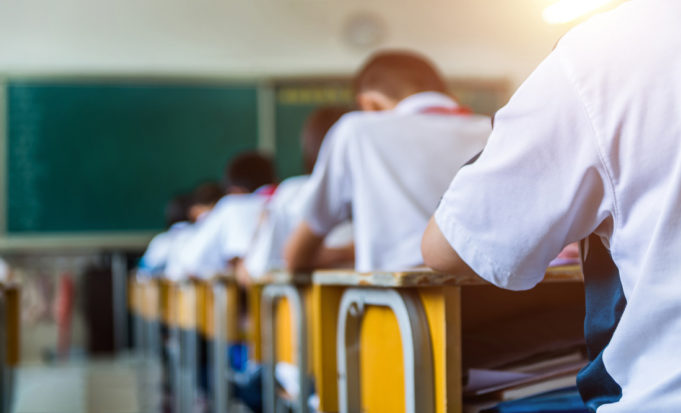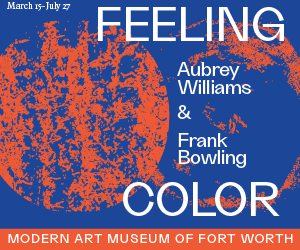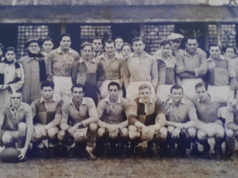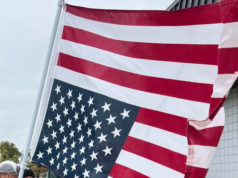In 1954, per Brown vs. the Board of Education, segregation in schools was outlawed in the United States. The hope was that Black children and other children of color would be able to get equal education and the right to go to school within their district of choice with better school resources.
Those hopes and dreams have kept BIPOC parents looking for ways to provide their kids with a better future. I took those same hopes and dreams with me after having my son over 10 years ago. Strapped with my own childhood trauma and disappointment from being in public school, we chose private school. Growing up in the 1980s, I went through severe microaggressions or just plain racist aggressions. I was in third grade the first time I was ever called the n-word. I was thrown in remedial classes instead of trying to figure out what was the best way for me to learn. I was overly disciplined and given detention several times for things that even my non-BIPOC classmates did but never got in trouble for. I was paddled/spanked a few times, too. Yes, that used to be allowed. I was bullied and made fun of by my non-BIPOC classmates and teachers, but nothing was ever done.
So, I felt that my best chance for my son to have less trauma was private school. I knew my son had his struggles, which eventually led him to be diagnosed with autism in fourth grade. I felt that going to private school would give him a chance to grow out of some of his struggles and get a good foundation at his learning pace. I felt that private school would be less drama and trauma for the most part because I am paying for it. Whoa, was I wrong.
*****
In 2019, after doing various tours at private schools around my area, we settled on one private school that met most of my requirements. It was nonreligious with a diverse student population, fair tuition, and various student activities. The one requirement not met was not having a diverse teaching staff. Research has shown that a diverse teaching staff helps every child but especially BIPOC children with confidence and school performance. I still felt this was the best, least costly option.
The 2019-20 school year started out with a bang and not a good one. During the kindergarten meet-the-teacher day, I attempted to be discreet when telling her about my son’s speech therapy and other struggles. She began to talk so loudly that other parents began to stare. My son even backed away from her. He then sat down in the corner and started to play with some toys. Those same parents and their kids began to move away from him as though he was some diseased monster, when he was just a 5-year-old Black boy playing with blocks and trucks. My heart dropped. Then I thought to myself, Maybe she’s nervous because she’s new to the school like we are. Still, you need to have professionalism anywhere you go.
The rest of the year was worse. My son told me she was a “monster,” and I threatened to pull him out. The director, who is great, tried to calm everyone down as we were not the only BIPOC family having issues with her. The very issues I was trying to keep my son away from, I put him right into. My husband and I listened to the director and stayed to try to make the most of it. It also did not help that in 2020, the pandemic hit, and there was probably nowhere else to enroll him in. Stuck like chuck. This teacher continued to show her true colors during online learning. She eventually ran off almost every BIPOC kid from enrolling in first grade. At least none of the other Black kids did.
We stayed, mostly because my daughter started at the preschool over the summer at this private school. The preschool had a more diverse teaching staff. I still love her Hispanic teacher to this day. I also felt that the first-grade teacher who had been there 20 years would be stable. Mentally. Also, for the most part, my son liked the rest of the other teachers there and the activities. Nope, wrong again.
Since my son was the only boy of color in the class, he was bullied by some of the non-BIPOC kids. These issues were brought up several times, including after my son came home with defensive wounds on his forearms and reported incidents of being pushed in the head by those same boys in the restroom. This first-grade teacher turned a blind eye until my son got tired and defended himself toward the end of the school year. I then got a note that said he needed to keep “his hands to himself.” I sent the note right back and stated that “the other kids needed to have been keeping their hands to themselves all year.” Research shows that 37% of BIPOC children report having been bullied in public or private school. In my opinion and personal experience, I notice that teachers never see when a BIPOC kid is being hit or bullied but will see when they react to the bullying. The educators end up disciplining the victim instead of supporting them from the beginning.
And on we stayed through second grade (racial microaggressions from the teacher) and third grade, when we established an IEP (Individualized Education Plan) that was only sometimes followed by the better teacher. Mind you, this school has a small enrollment: at the most, 10 students per grade; at the least, five students in a class. So, in my mind, since I am paying for this, it is reasonable to ask for a little more academic assistance from time to time. The teachers don’t have that many kids to deal with.
The final straw was fourth grade. By this time, I was trying to continue to find ways and resources to help my son at this school. I kept holding out hope because third grade was not as bad as first and second. Unfortunately, fourth grade was bad again, with a pushy and clueless teacher who kept feeding him snacks and whatnot that were clearly on his food allergy and sensitivity list so he wouldn’t feel “left out.” She also kept giving him work beyond his comprehension, even with the new IEP on file for the school district along with his new diagnosis of autism. She did not want to be the partner in education that I was so desperately trying to get all the teachers to be. After all, I am paying for this! Clearly, at this point, my expectations of this school were not realistic. I could have gone elsewhere, but I thought, Stick with devil that you know.
I had several meetings with the private school director. I even filled out the yearly survey and requested to speak to the district rep for the private school company. No dice. Like most other surveys, theirs were also just for show because nothing ever changed.
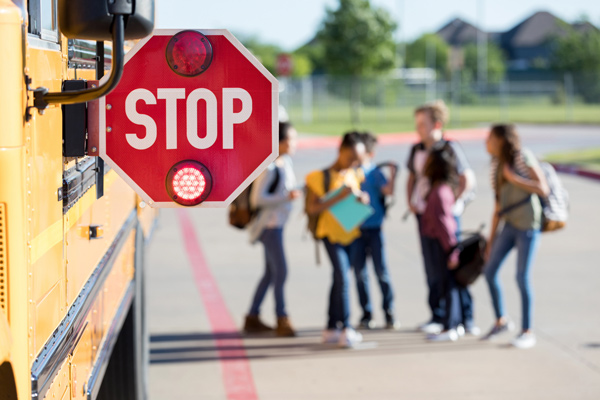
*****
What people never tell you about private school is that they really don’t have any real resources. You are paying for every little thing and really getting nothing. There is no school psychologist, speech therapist, remedial aid, nothing. If you want any of those services or extracurricular activities, you have to go outside of the school and pay for them, especially the speech therapy, which I did pay for out of pocket for my son for almost three years. Given this knowledge and the new knowledge that I could turn to the public school system for testing and a new IEP, I reached out. Not in million years did I think I would be returning to public school for anything. My public-school trauma seemed too big to overcome.
The process was so easy. It was a far cry from what I experienced in my time in public school and with requesting services, because it seems there are more laws now for kids with disabilities. It was so easy that I am now in the process of getting my daughter tested also.
Armed with a new IEP and diagnosis of autism, you would think that any school (public or private) would say, OK, let’s get to work and help this child. Not in private school. They don’t have to, because they have their own curriculum and rules. They don’t seem like they were equipped or knowledgeable enough to help with these issues. They claim to be on an accelerated track, meaning that every grade learns one grade ahead. This does not leave room for kids who need a slightly slower track. This left my son not even close to being at grade-level for math and reading. Research says that over 42% of BIPOC children are behind in math and reading. I put my child in private school to keep him from being too behind in any subject. My daughter was overly stimulated with all the day-to-day activities, which started to feel more like a circus than a place for learning. I knew another year at this private school would not be good for her. Plus, I did not want to have to deal with the same teacher over again. As of April 2024, I have registered my children with the local public elementary school, where there are IEPs and accommodations now on file for my son and soon for my daughter.
Five years and nearly $150,000 later, I have buyer’s remorse. I could have had my next dream car, an Audi S7 Sportback, paid for by now. I feel I have wasted five years of our kids’ lives on a private school we thought would be great, but instead we are left trying to scramble to help them catch up. Even if I were to have stayed there for free, I would not have, because I don’t want to deal with those teachers any longer. They are not as progressive as they think. Not everything with that school was negative. There were some good teachers, and summer camp was great, but, overall, that private school is no longer a good option for our family.
As a therapist, I am trying to do for my kids what I would for my clients, which is to advocate for what they need. I still have hopes and dreams that with the support of their family and community, my kids will meet whatever goals they have for themselves. It is disheartening to know that I invested in a school so that they would invest in my kids, and I barely got a return. The very monster and trauma I was running from — the public school system — is the very thing I am running to now, mostly because I know now there are laws in place and I actually have more power without money to advocate for my child.
My, how things have changed from 30-plus years ago. I know everything may not have changed in public schools as far as teachers and their own beliefs — you can’t change everyone’s beliefs or not make them racist — but at least I am not paying for the racist microaggressions.
I don’t know what the 2024-25 public school year will hold for my kids. I am both excited and anxious. I am sure I will have to keep advocating for them. That will never stop. I set them up for tutoring this summer as well as continuing to tutor them myself at home. I am willing to pay for tutoring. But no longer will I be paying for private school. (Homeschooling is not an option for me.) It is still great that BIPOC and, in fact, everyone else have a choice as to what school they want their child or children to go. Just make sure you are truly making the right choice for you and your family. Don’t let all of your own trauma and fears hinder you from making clear decisions for your child or children. Whether it’s private school or public school, do your research. BIPOC community, the choice is still ours to keep fighting and advocating for our kids to have an equal and fair education.
T.C. is a holistic Licensed Professional Counselor with over 17 years of experience in the mental/behavioral health field. She lives in Arlington with her happy family.
This column reflects the opinions and fact-gathering of the author(s) and only the author(s) and not the Fort Worth Weekly. To submit a column, please email Editor Anthony Mariani at Anthony@FWWeekly.com. He will gently edit it for clarity and concision.



